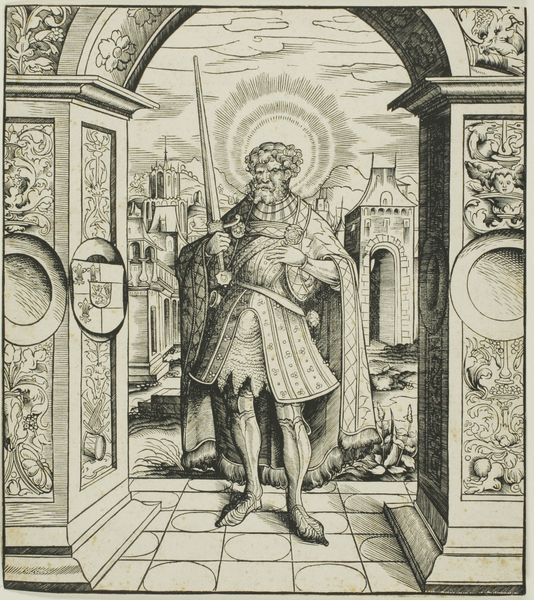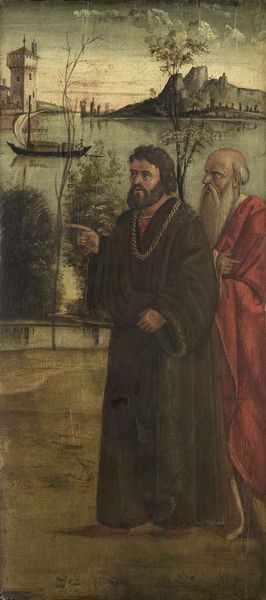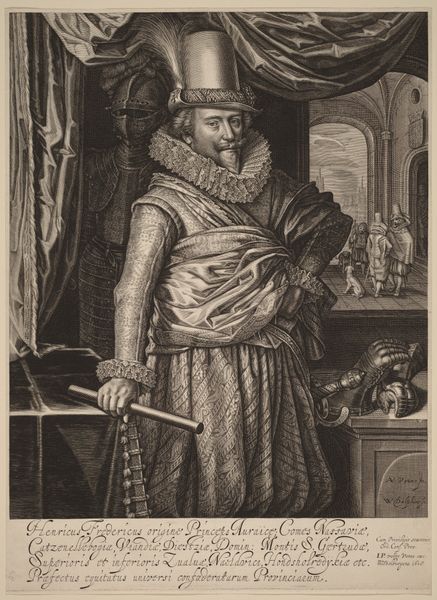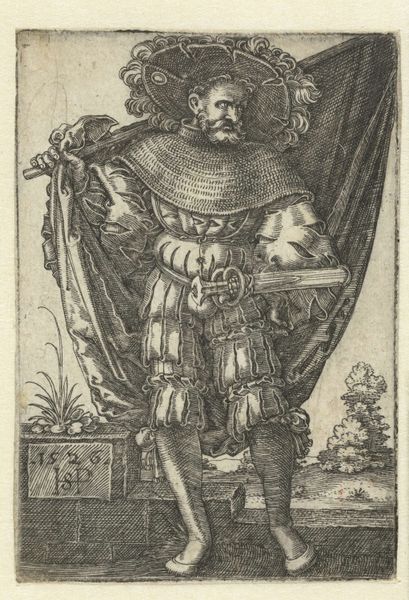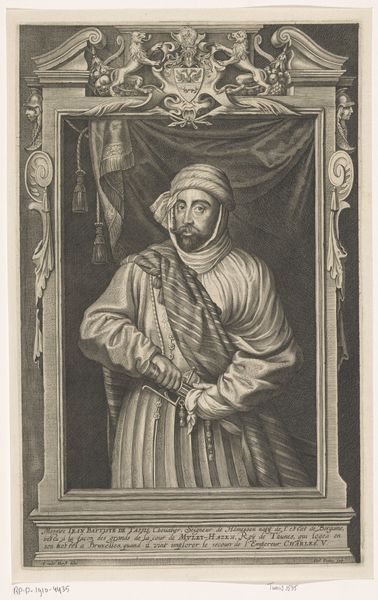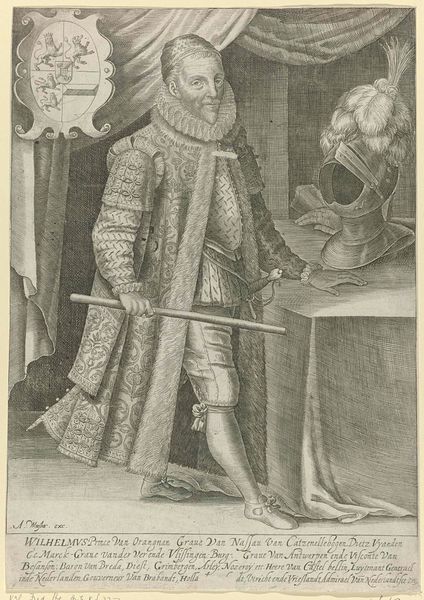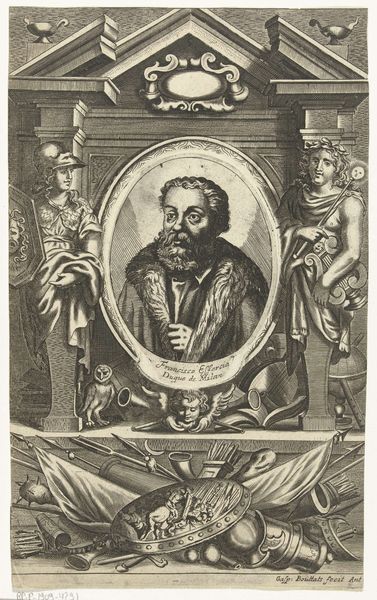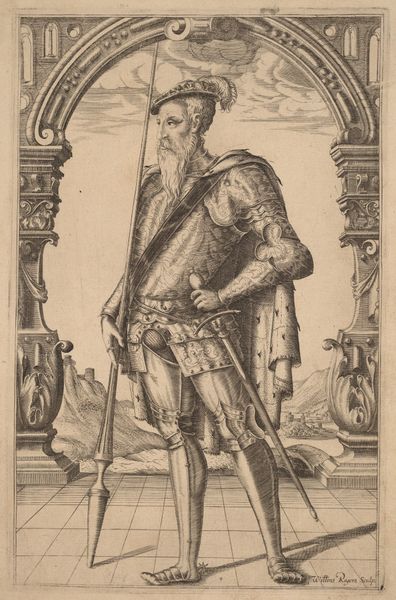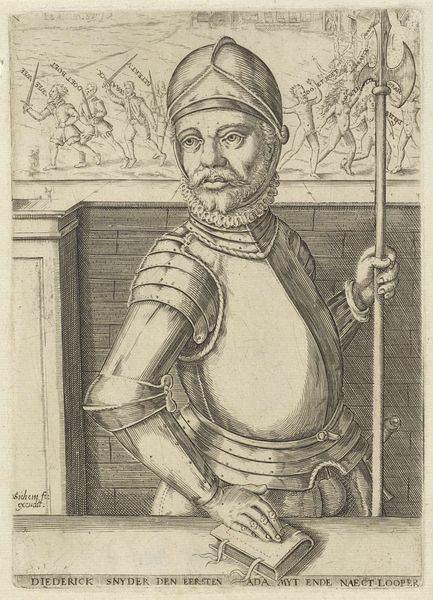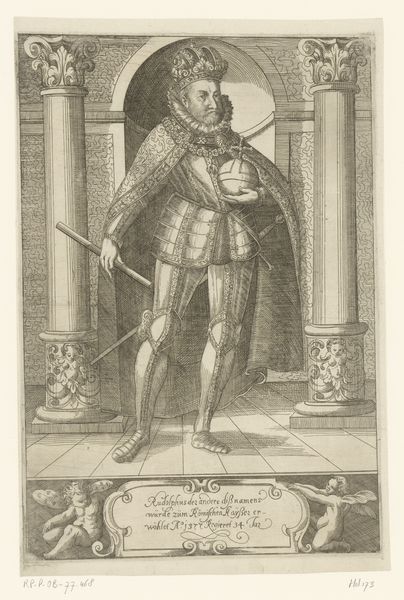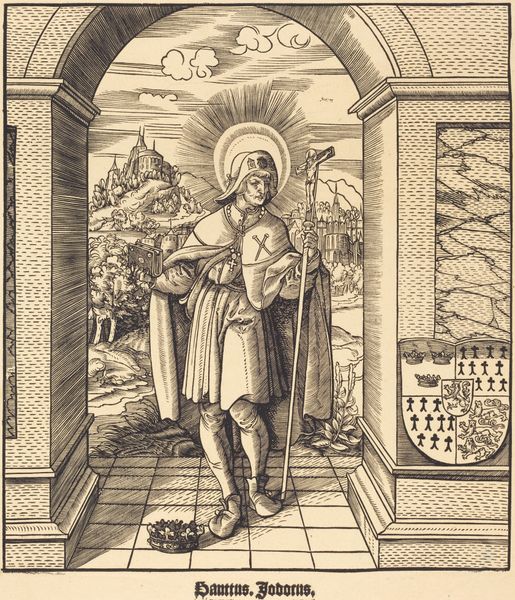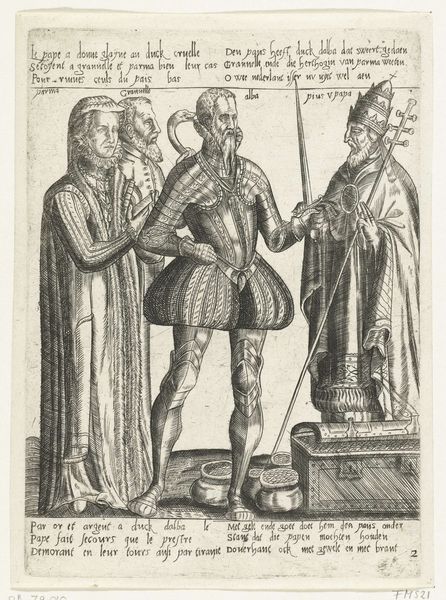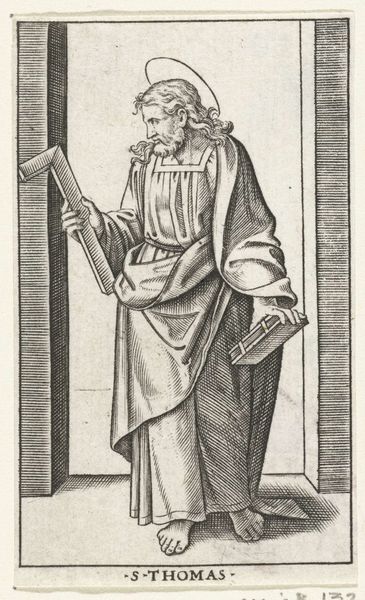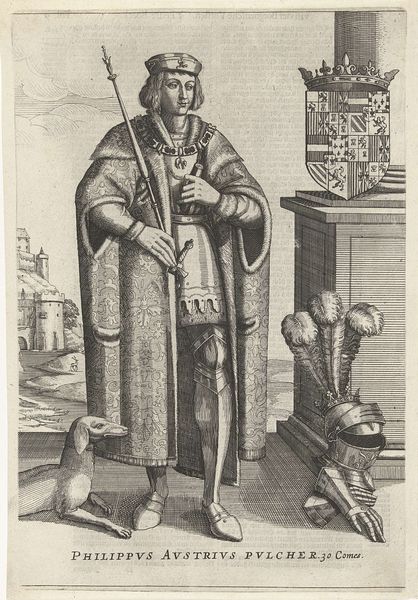
oil-paint
#
portrait
#
baroque
#
oil-paint
#
figuration
#
oil painting
#
islamic-art
#
history-painting
Dimensions: height 38 cm, width 31 cm
Copyright: Rijks Museum: Open Domain
Curator: Jean Baptiste Vanmour, likely sometime between 1700 and 1737, gives us this striking "Portrait of Sultan Ahmed III" rendered in oil paint. What are your initial impressions? Editor: It's immediately arresting. The Sultan has such a palpable air of composed power. I am particularly intrigued by the architecture glimpsed through the doorway – its cool tonality throws the central figure into sharper relief. Curator: Indeed. Vanmour's biography is fascinating because his trajectory placed him right at a crossroad of cultural exchange. As a painter within the Ottoman court, he became an influential conduit, mediating visual representations of power dynamics between the Ottoman Empire and Europe. Editor: Exactly. And it’s crucial to acknowledge the complicated positionality of artists like Vanmour who functioned within systems inherently steeped in coloniality. How does the painting either challenge or replicate orientalist tropes about the 'exotic' East, particularly given its depiction of rulership? Curator: Precisely the critical point. Vanmour straddles the line. There's certainly an emphasis on opulent details – the rich fabrics, elaborate turban. Yet the Sultan isn’t presented as a passive object of the gaze. There’s a certain assertiveness, challenging simplified or fetishized portrayals common in some European art. Editor: I wonder how his contemporaries within the Ottoman court received such depictions. Were they actively engaged in shaping a visual narrative that aligned with their own notions of authority and cultural identity? How much agency did the subject, Sultan Ahmed III, actually possess in this representation of himself? Curator: The painting functions within the institutional politics of image-making during the 18th Century. European artists like Vanmour had a patron role to play while incorporating a more generalized taste of art in that time. Editor: This deepens my interest. How do we see that dialogue expressed here? It urges me to see beyond the single portrait and into its intricate, intersectional narrative. Curator: Indeed. Hopefully these layers will open new considerations as you continue to consider "Portrait of Sultan Ahmed III". Editor: Precisely. Art isn't static; our relationship to its history actively transforms what it might come to mean for us now.
Comments
No comments
Be the first to comment and join the conversation on the ultimate creative platform.
